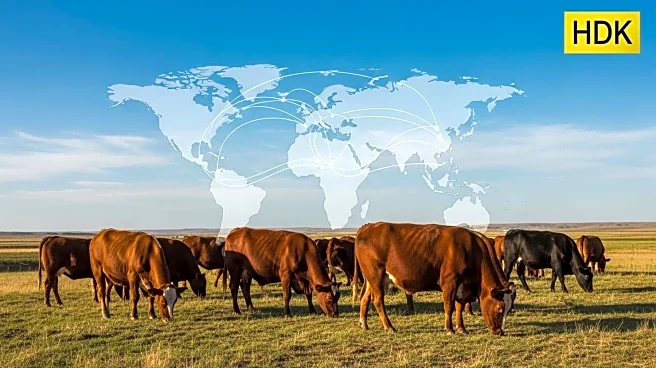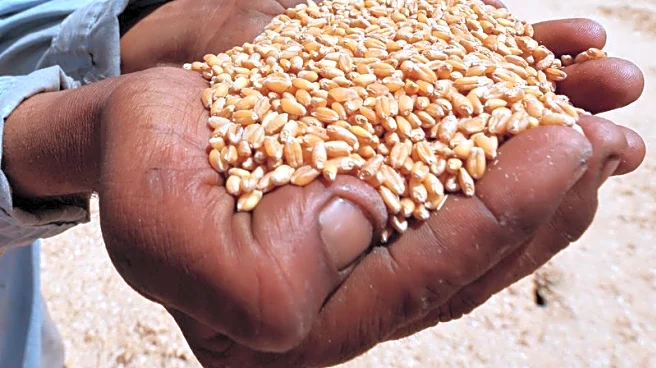What is the story about?
What's Happening?
The United States continues to be a significant player in the global beef market, despite facing challenges such as declining cattle inventory and production pressures. According to the USDA Foreign Agriculture Service, the U.S. is expected to produce over 11.8 million metric tons of beef and veal, maintaining its position as the top producer. However, domestic production is under strain due to factors like drought and high prices. The U.S. also ranks high in beef consumption, with over 12.65 million metric tons consumed annually. In terms of trade, the U.S. is among the top five markets for both beef exports and imports, ranking second in import quantity and fourth in export volume. The decline in U.S. beef exports is attributed to reduced production and strong domestic demand. The U.S. typically imports and exports similar quantities of beef, but recent trends show imports exceeding exports since 2022.
Why It's Important?
The dynamics of the U.S. beef market have significant implications for both domestic and international stakeholders. The pressure on domestic production could lead to increased beef imports, affecting U.S. trade balances and potentially impacting prices for consumers. The U.S. beef industry is a critical component of the agricultural sector, influencing employment and economic activity in rural areas. Additionally, the quality of beef exports, which are generally higher than imports, underscores the U.S.'s role in supplying premium beef products globally. Changes in production and trade patterns could affect international relations with major beef trading partners like China, Brazil, and Australia.
What's Next?
In the short term, the U.S. beef industry may need to adjust to the ongoing production challenges by potentially reducing cow and heifer slaughter to initiate an expansionary phase in the cattle cycle. This could eventually lead to increased domestic production. Stakeholders, including policymakers and industry leaders, may need to consider strategies to support the cattle industry, such as addressing drought impacts and stabilizing prices. The global beef trade landscape will continue to evolve, with the U.S. needing to navigate its role amid competitive pressures from other major producers like Brazil and Australia.
AI Generated Content
Do you find this article useful?
















